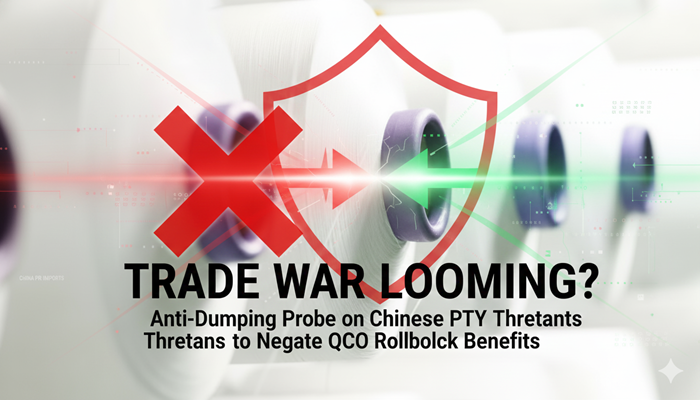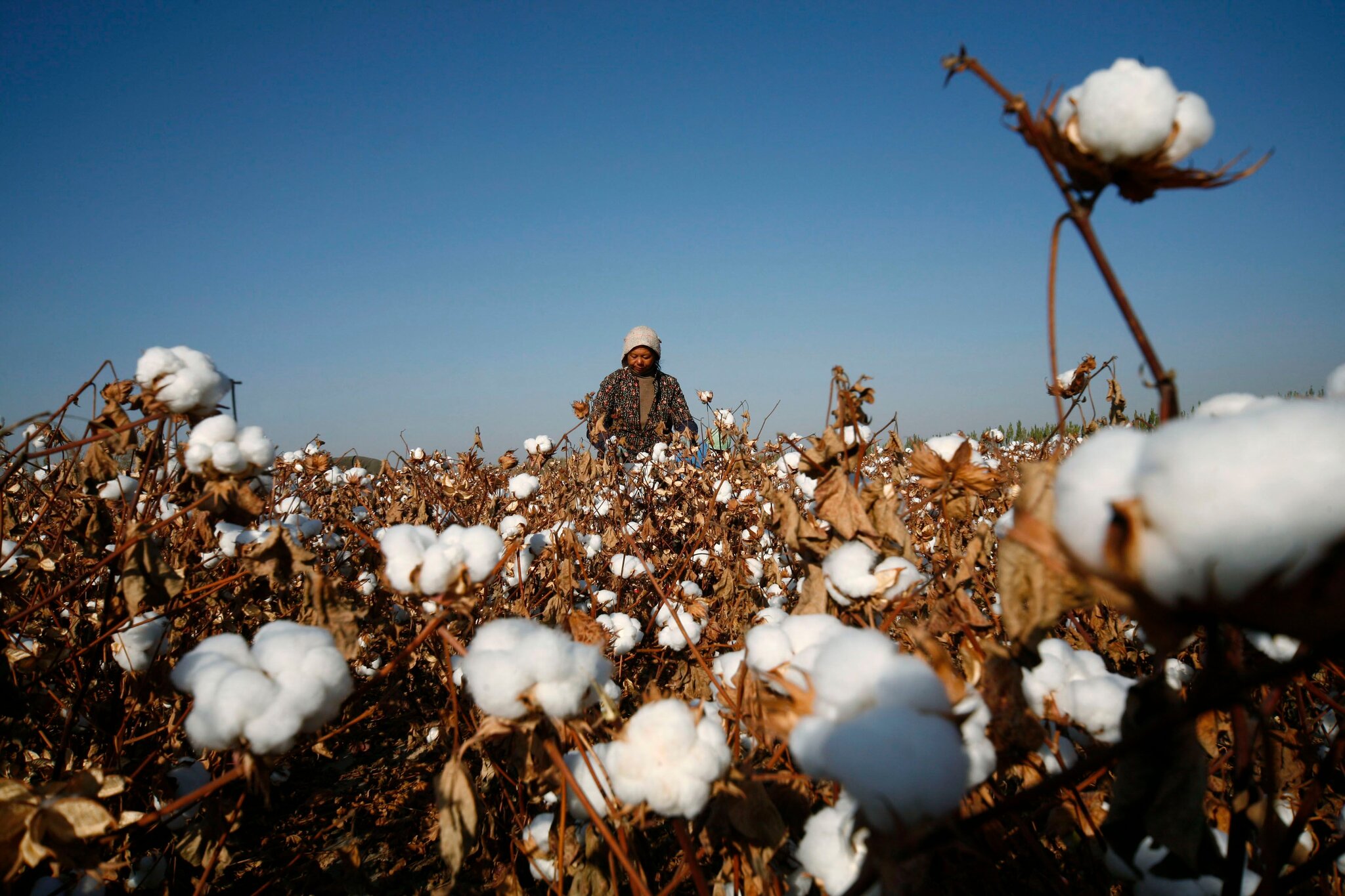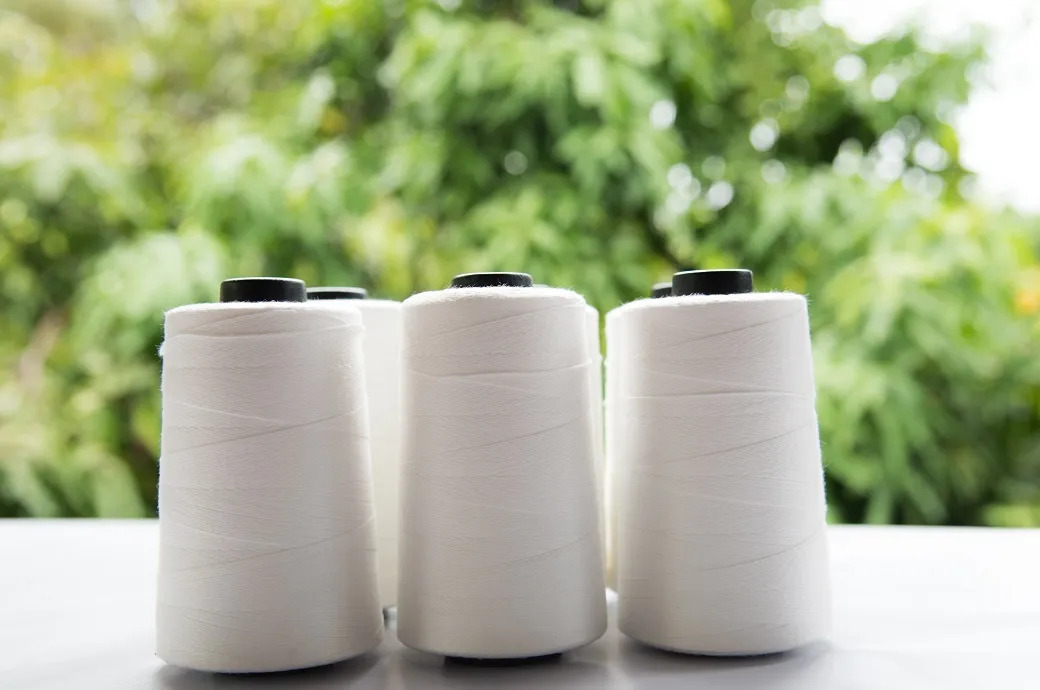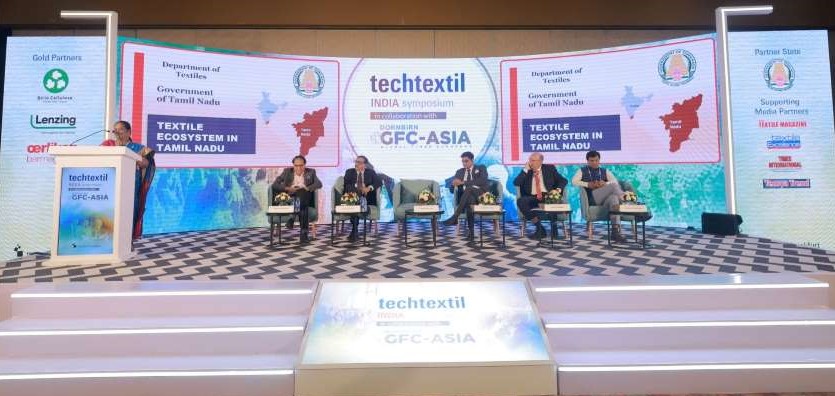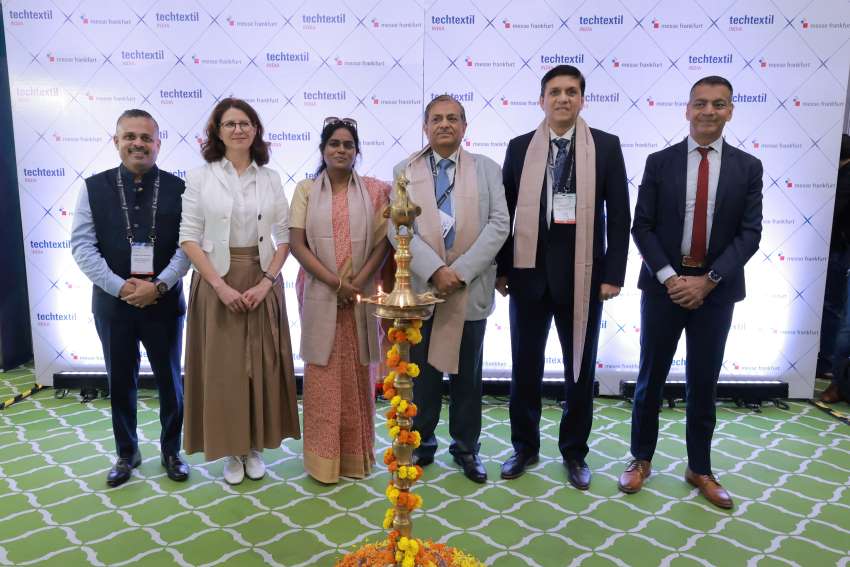FW
India International Garment Fair (IIGF) will be held in New Delhi from January 18 to 20, 2017. The event is aimed at helping exporters from India showcase their latest designs and apparels for the upcoming season. It is expected to attract buyers from all over the world. India’s rich heritage of fabrics mixed with its artisans offers buyers a staggering range. Indian factories can also produce small runs and offer a variety of embellishments giving more value to the customer.
With the dynamics of the global garment and apparel industry changing considerably in the last couple of years, the industry is shifting to India, the world’s most diversified clothing exporter.
IIGF is the flagship event of the Apparel and Export Promotion Council (AEPC). It has been building bridges between global buyers and suppliers from India for the last three decades. For this edition, AEPC has partnered with virtual fashion trade show platform Fashionablyin to create a virtual buyers’ lounge. Fashionablyin aims to make buyer trips more efficient by engaging them with the right suppliers. The company will match buyers with suppliers by planning meetings in advance and facilitating discussions with suppliers. The Fashionablyin Virtual Buyers Lounge will be great place for buyers and suppliers to connect and build relationships in a friendly and casual environment.
The synthetic textile industry in India wants the excise duty on synthetic yarn to be reduced from 12.36 to four per cent. It also wants a two per cent excise duty to be imposed on cotton yarn. At present this is zero. The Indian synthetic textile industry is valued at Rs 1, 20,000 crores. Growth is driven largely by value added segments. However the share of synthetic textiles in total textiles in India is just 35 per cent as against the global average of 65 per cent. This is due to the high burden of taxes like excise duty and customs duty. So the industry wants the duty structure rationalized.
India is one of the world’s leading manufacturers of manmade textiles. Due to heavy investments in world-class manufacturing plants, continuous innovation, new product mix and strategic market expansion, Indian manmade fibers are set to take centre stage in the global arena. Export of manmade fiber yarns in June 2016 registered a year-on-year growth of 35.9 per cent. Polyester is the largest segment of the Indian manmade fiber and rayon textile industry.
Indian exports manmade fiber textiles to more than 146 countries. Turkey, Egypt, Indonesia, Brazil, and Germany are major importers of Indian manmade fiber yarns.
Pakistan’s denim exports to the United States fell by 3.3 per cent in 2016. One reason, say manufacturers, is the high cost of production. While a number of countries provide zero-rated facilities to their exporters, in Pakistan exporters have to face taxes such as the export development surcharge and the withholding tax. China provides free electricity for the first three years to new units.
Denim manufacturers in Pakistan face hard pricing pressures due to capacity additions and cancellation of a few orders. Pakistan is the second largest exporter of denim in the world after China. Exports of cotton denim fabrics from Pakistan stood at around 51 million square meters worth Rs 39 billion in 2016.
Turkish denim exports increased from 3.9 million meters to 46 million meters in five years. Chinese denim exports to the United States grew up from 6.9 million meters to 87 million meters in the same period. World trade in denim fabric averages 6, 70,000 tons a year. The global market for denim is forecast to reach 64.2 billion dollars by 2020, driven by increasing disposable income. Europe represents the largest market worldwide. The market situation does not allow global denim players to increase consumer prices and therefore, they have to absorb the price increases from denim fabric producers worldwide.
The Korea-Vietnam Free Trade Agreement, which took effect a year ago, has mainly expanded exports from South Korea to Vietnam. South Korea’s shipments to Vietnam in the first 10 months climbed 12 per cent from the same period last year.
Rising exports have made Vietnam the world’s third largest importer of South Korean products during the January to October period after China and the US. South Korea’s exports to Vietnam include a wide range of products from iron and steel and garment materials to phones and consumer goods.
In particular South Korea was the biggest seller of computers and electronics to Vietnam, with a total value up 26.3 per cent from the year-ago period. It was also the second biggest supplier of machinery to Vietnam, where exports were up 9.5 per cent. Fuel shipments from South Korea increased fivefold.
Vietnam has been recording a larger trade deficit with South Korea since 2010. The deficit hit nearly $19 billion last year. About 42 per cent of South Korean exporters increased their shipments to Vietnam following the enactment of the Korea-Vietnam FTA in December 2015. A majority expected the free trade deal to continue helping their business in 2017. For years, South Korea has been the biggest foreign investor in Vietnam, driven by major projects of electronics giants LG and Samsung,
Readymade garments sold in loose form have been exempted from Legal Metrology (Packaged Commodities) Act 2011. Rahul Mehta, President, Clothing Manufacturers Association of India (CMAI) says this move is a game changer for the apparel industry. It not only gives one ease of doing business but also provides freedom from undue demands of the inspectors and their inspector raj.
As per the Legal Metrology (Packaged Commodities) Act 2011, there were no clear labelling guidelines for loose garments which made it difficult for apparel retailers to demarcate the labelling procedure between the pre-packaged and loose garments. This caused unnecessary inconvenience during inspections at apparel retail showrooms. The provisions of the Act were very severe for any offense and Directors of the Company were directly responsible for the same.
By their definition and usage, loose garments should not have been under the ambit of the Packaged Commodities Act. These were archaic laws that were irritants for apparel retailers. Now, with the new notification, loose garments are out of the purview of this act and the labeling norms simplified.
In case of garments sold to consumers in pre-packaged form, mandatory labeling along with size of the garments needs to be mentioned in metres or centimeters. Further, details such as S, M, L, XL, XXL etc will be treated as additional declaration.
For ages, Mynmar was suffering from the crippling of decades of military rule. But now, the country is slowly emerging from the bad effects where poorly-managed resources industry dominated much of the country’s trade.
The Aung San Suu Kyi-led government is encouraging foreign and local investment in job-creating export industries with a strong focus on manufacturing. Boosted by US President Barack Obama’s recent withdrawal of executive sanctions on the country, Myanmar’s garment industry is on the rise so much so that it aims to be the nation's largest employer. The NLD-led government hopes to see new factories coming up which can provide employment for hundreds of thousands whose education and work opportunities were stunted under 50 years of military rule.
Exports have almost doubled in the last five years to $1.1 billion for the 2015 financial year. According to the ILO, the sector employed 380,000 people, mostly women. The government recently passed an investment law that allows tax breaks for investment in the industry. The Myanmar Garment Manufacturing Association estimates the industry will employ up to 1.5 million workers by 2024.
However, many problems persist. An inexperienced government has been slow in detailing policies that give businesses the predictability they need. While some companies have benefited from foreign help, many factories are still coming to grips with Myanmar’s transition. Industrial relations are struggling to keep pace with growth.
"If the Trans-Pacific Partnership (TPP) is discontinued at any given point, it’s Asia which is going to be at the receiving end. Singapore, along with New Zealand and Chile, initiated the Trans-Pacific Strategic Economic Partnership agreement in 2005. Despite its small size, Singapore plays a significant role in the TPP. The benefits of the trade pact are more strategic than economic. By playing a part in shaping the rules of the TPP, Singapore is given an opportunity not often accorded to a small country."
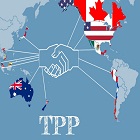
If the Trans-Pacific Partnership (TPP) is discontinued at any given point, it’s Asia which is going to be at the receiving end. Singapore, along with New Zealand and Chile, initiated the Trans-Pacific Strategic Economic Partnership agreement in 2005. Despite its small size, Singapore plays a significant role in the TPP. The benefits of the trade pact are more strategic than economic. By playing a part in shaping the rules of the TPP, Singapore is given an opportunity not often accorded to a small country. Moreover, Singaporean firms can gain important advantages by being the first to adapt to such rules, and they can be of service to firms from other countries by helping them to tap into the vast market TPP creates.
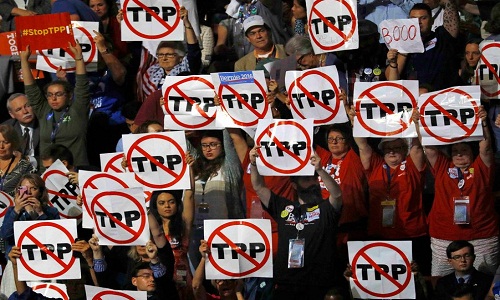
Although the TPP has been discontinued at many places, Singapore is still betting big on TPP. First, Singapore still has an FTA with the US, which has eliminated tariffs on all of Singapore’s exports to the US as of 2014. Singapore also has FTAs with the other three big players (the EU, China and Japan). As the only country in the world with FTAs with all the top four traders, Singapore is in an enviable position. Second, if the TPP does collapse, although Singapore wouldn’t be able to help influence the rule-making process, it can still play an important role in other forums, such as the Regional Comprehensive Economic Partnership (RCEP), the Asia-Pacific Economic Cooperation and the World Trade Organization.
It would be difficult for Singapore to persuade other countries in these forums on any given set of rules owing to the greater membership diversity. However, as their memberships would be more representative, if Singapore were successful in pushing certain rules at these forums they would have a much higher chance of adoption at the global level.
Implications for other ASEAN Economies
While the discontinuity of the TPP won’t impact Singapore in a significant way, the situation is different for countries such as Vietnam and Malaysia. For these two economies, the main benefit of TPP membership was the access to the US market. Without the TPP, these two countries will find it hard to compete with other developing countries exporting similar industrial goods and raw materials. It’s going to be a tough ride for other countries as well. If the TPP were to come into full effect, trade and investment activities in the four ASEAN TPP members (Brunei, Malaysia, Singapore and Vietnam) would intensify, and in turn generate positive spillover effects for other countries in the region. Without the TPP, none of this will work.
IS RCEP the alternative?
Owing to the increased awareness around the Regional Comprehensive Economic Partnership (RCEP), a proposed FTA between the 10 ASEAN states and China, Japan, Korea, India, Australia and New Zealand, TPP will soon become a forgotten phenomenon, believe experts. Having said that, while China is currently ASEAN’s largest trading partner, it is also one of its major competitors due to similarities in export profiles. ASEAN countries used to enjoy a surplus in their bilateral trade with China before the ASEAN-China FTA came into effect. But in 2012, two years after the ASEAN-China FTA came into effect, ASEAN ran into an $8.5 billion trade deficit. This further snowballed to $44.5 billion in 2013, and $63.8 billion in 2014. Adding the other five countries into the mix might not solve the deficit problem for ASEAN as none of them can match China’s manufacturing prowess.
Moreover, based on what is known so far, the RCEP doesn’t look promising in terms of its scope. The tariff concessions for goods seem to be lacking in both breadth and depth; and it is the same for trade in services as well. As for new regulatory areas such as competition, environment and labour issues, it is not likely there will be rules, or at best, just cursory references to them.
Without the external pressure from the TPP, it will be hard for most ASEAN countries to upgrade their trade profile or their regulatory frameworks. While the RCEP might bring short-term gains in the traditional agricultural and manufacturing sectors, ASEAN countries that are interested in upgrading their economies might need to look elsewhere for inspiration.
Textiles Minister Smriti Irani presented the AEPC Export Awards, 2015-16. She encouraged AEPC and garment exporters to be a partner in the government's efforts towards job creation through value-driven manufacturing and exports. The minister presented the awards in 22 categories. The awards were divided into multiple categories and the key awards were given to Shahi Exports, Orient Craft, Gokaldas Exports, (Bangalore).
Winners for Global exports above Rs 100 crore and up to Rs 500 crore were: Pearl Global Industries, Pratibha and Raymond Group of Companies. Award winners for Global exports above Rs 50 crore and upto Rs 100 crore were: Penguin Apparels, Jyoti Apparels and Loyal Textile Mills. Award for the new entrepreneur was bagged by Milion Exports Private and winner for the highest exports to Japan was Lodha Impex.
Speaking on the occasion, the minister said her ministry would do its utmost within the constitutional framework to strengthen the industry. In the wake of demonetization, the Textiles Ministry has helped open 5 lakh bank accounts for associated workers in the industry in a period of three weeks. The Minister said that the government is also ensuring that the workers are trained to digitally use their bank accounts.
She further noted to further promote exports, there should be an award for the best player in emerging market in the next award season. Industry should also head towards sustainable garments from an international perspective; and should look for innovation either in marketing or technology.
Swedish company We are SpinDye has developed a new method that could revolutionize the manufacturing of synthetic fibers and thereby of pants, jackets and backpacks. The new method involves no high use of water and heavy use of chemicals which was part of the dyeing process. It is resource-efficient, sustainable, colorfast, and no bleaching out.
We are SpinDye dyes synthetic fibers is completely different from other textile company, as they are focused on sustainability and environmental protection. Above all, the immense use of water is significantly reduced by innovative procedure. The idea of We are SpinDye is quite simple: recycled plastic is melted down, the desired dye pigment is added to the undyed material. After that, yarn is produced from it in the desired strength. The clients and manufacturers can further process this yarn as usual.
CEO Martin Berling of We are SpinDye says their company is built on the principle of the least possible damage to the environment. They require hardly any water, produce practically any garbage, and the use of chemicals is reduced to a minimum. We are SpinDye is offering its technology for all synthetic materials, such as polyester or nylon, but also for rayon. A combination of synthetic fibers and unbleached wool can be used. There are no limits for manufacturers in further processing: The fabrics can, for example, be coated or equipped with a membrane.
The company isn’t the only one that’s developed a water-free dyeing technology. There are others, for example Nike and Adidas that have procedures with ColorDry or DryDye that don’t require water for the dyeing process – for years now.
India is looking to be self-reliant in raw silk and plans to bring down imports to zero level by 2020. K M Hanumantharayappa, Chairman, Central Silk Board (CSB) says with consistent supply of raw silk of high quality in adequate quantities and increased production of bivoltine silk, India will be able to attain self-sufficiency in silk.
To achieve this objective, CSB has been making concerted efforts and is developing new technologies for quality cocoon production and its conversion into silk yarn of global standards. Currently, the silk production is around 28,000 tons of which 10,000 tons account for crossbreed Mulberry variety.
Hanumantharayappa further said that there is a gap between silk production and demand. Besides shortage of skilled manpower is forcing imports. To bring this to an end, the Central Silk Technological Research Institute (CSTRI) under funding from the board has developed indigenous Automatic Reeling Machine (ARM) and it will be supplied to reelers from next year.
The Board is launching its second Centre of Excellence (CoE) at its headquarters in Bengaluru which is expected to be inaugurated by Union textile minister Smriti Irani. Managed by the CSTRI, the CoE will conduct specialised skill training and advanced short-term and long-term courses in silk reeling, spinning, twisting, weaving, processing, finishing and computer-aided design development and colour matching, besides packaging.



